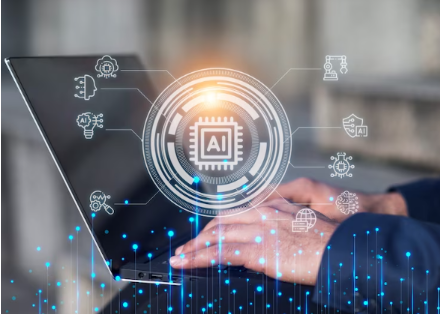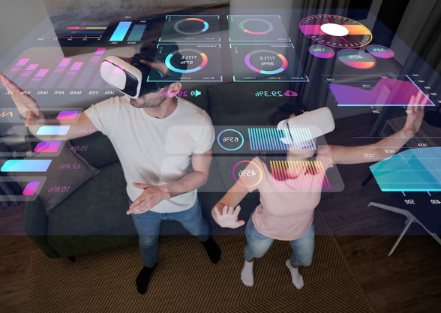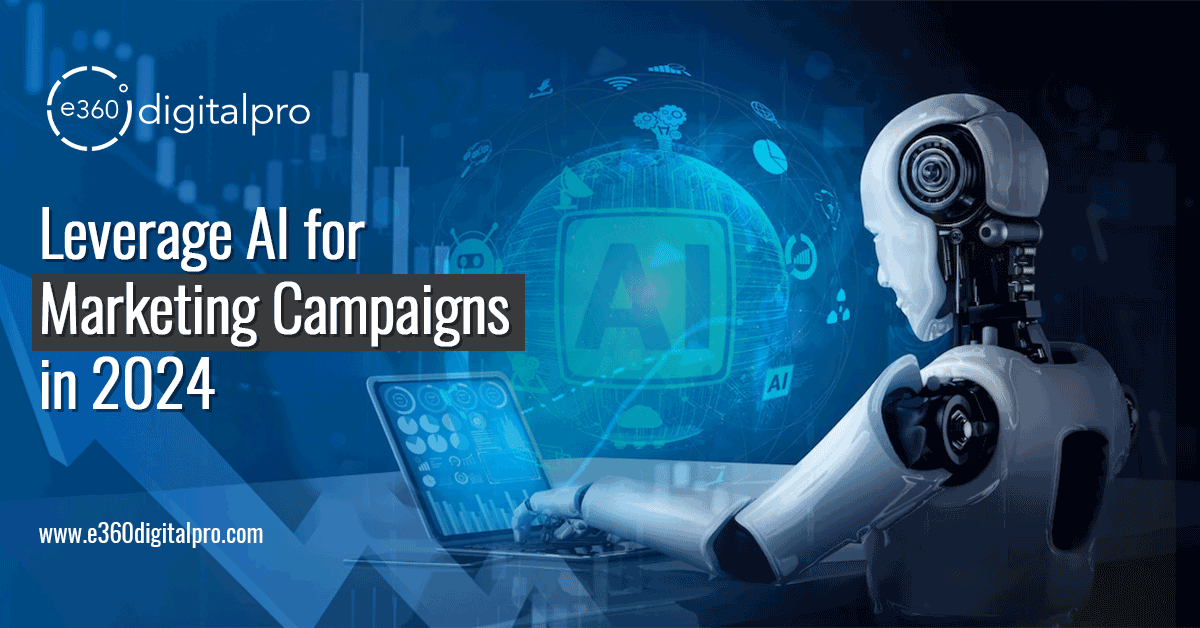Hey peeps and tech-savvy trendsetters! Get ready to dive deep into the wild world of Web 3.0. Because we’re about to unravel the digital revolution that’s shaking up the game! Traditional marketing, meet your rowdy cousin – Web 3.0.
Swipe left on outdated strategies and get ready to decode the freshest vibes of the internet. In a world where memes are the new billboards and NFTs are the new cool, we’re asking the burning question – Is Web 3.0 the final boss, signaling the end of traditional marketing? Let’s break it down like we’re spilling the tea at a digital cocktail party!
Web 3.0 and Existing Business Models

We have just begun to explore the potential of Web 3.0, its ability to upset the status-quo is irreplaceable.
Web 3.0 represents next gen of the internet, which aims to shift power from large corporations to individual users. Its focus is on decentralization, transparency, and security. As for the stats, each month more than 18k active developers commit code in open-source crypto and Web 3.0 applications.
According to Medium:
“Web3 marketing allows for more transparency than traditional marketing. With Web3, businesses can create a decentralized identity that will enable customers to verify their authenticity. This helps to build trust between businesses and customers, which is essential for building long-term relationships”.
The Goal Web 3.0 Aims
The Web 3.0’s ambitious goal is not only to interpret what you input but actually understand what you’re conveying and provide you with personalized recommendations by leveraging the power of artificial intelligence (AI) and machine learning (ML).
What is Web 3.0 and What Makes it Different?
Web 3.0, otherwise called web3, works on a decentralized stage and cycles data in a brilliant human-like manner. Web 3.0 uses technologies like artificial intelligence, machine learning, the semantic web, and blockchain to help provide a faster, more personalized user experience as well as increased transparency.
Initially, Web 3.0 was known as the Semantic Web by Tim Berners-Lee, the creator of the Internet. The attention was on building the following web — more smart, open, and independent than its ancestor.
Presently, the significant objective that Internet 3.0 seeks after is to give control of the information back to clients. Thus, instead of just using tech platforms in exchange for their data, users will be able to participate in the governance of these platforms.
What Is Web3 Used For?
While Web3 technology is still very nascent, it already offers a number of distinct use cases. Here are the top 5 at present:
Metaverse
The concept of the metaverse dominated tech headlines in 2022, with Facebook even rebranding to Meta and dropping billions into development in order to annex this new digital realm before anyone else could.
Blockchain Gaming
The play-to-earn craze began in 2021 with the release of Axie Infinity, which promised gamers the chance to earn money from gaming. Before long, a huge number of copycat blockchain-controlled games sprung up offering worthwhile prizes to players as local tokens which soar at send off and afterward kept on failing.
While the bear market crushed the high-risk area of crypto gaming, it’s not game over right now. Various excellent crypto games are still being developed, while Web2 gaming behemoths like Amazing Games are conveying Web3 games. Expect major areas of strength for an in blockchain gaming, when designers sort out some way to make it fun and energizing enough for players.
Maker Economy
One of the greatest problems with Web 2.0 goliaths, for example, Facebook, YouTube and Spotify are that they don’t enough reward specialists and makers on their foundation for the guests they pull in.
With Web3, maker networks of craftsmen, essayists, artists, planners and engineers can at last sidestep middle people and associate straightforwardly with their crowds and allies. This will assist them with acquiring the majority of any income produced all the while.
According to Heidi Cohen:
“Web 3 is the next generation of the web in which decentralized apps (dApps) operate on top of a shared data layer and users have control of their data and the ability to move between dApps with little to no switching costs. … We (individuals and/or companies) own these identifying data elements and we can provision them in any app we want”.
Development of the Web3 Innovations
Web3 will emerge as a result of the natural evolution of older web tools, cutting-edge technologies like AI and blockchain, user connectivity, and rising internet usage. Obviously, Web 3.0 is a move up to its forerunners: web 1.0 and 2.0.
What Could You At Any Point Really Do on Web 3.0?

Web 3.0 will permit you to control items that were recently concentrated. With Web 3.0 innovation controlled by blockchain anything can be tokenized, whether it’s a piece of workmanship or a pass to a show.
Another model that plainly exhibits the Internet 3.0 importance for end clients is gaming. With Web 3.0, gamers will actually want to put resources into games and have command over them by deciding on how things ought to run, what changes ought to be made in the following updates, and that’s only the tip of the iceberg.
What Are the Key Web 3.0 Features & Components?

The core features and properties distinguishing Web 3.0 comprise decentralization, connectivity, the semantic web, 3D graphics, artificial intelligence, machine learning, and a permission less environment.
Artificial Intelligence
Web 3.0 technology can process information in a way similar to humans. As a result, platforms can better satisfy user needs through continuous learning.
As of LS Digital:
“Web 3.0 is also characterized by its intelligence. This means that the web is now able to understand and interpret data in a way that was previously impossible. Artificial intelligence (AI) and machine learning (ML) are the key technologies that enable this intelligence. AI and ML enable the web to provide more personalized and relevant content and services to users”.
3D Capabilities
Three-dimensional design is already in use on many Web 3.0 platforms. Computer games, e-commerce applications, and mapping software represent only a few potential use cases.
Ubiquitous
In the decentralized Web 3.0 climate, all satisfied is open by various applications, each gadget interfaces with the web, and the related administrations are accessible all over.
Besides, Web 3.0 will be permissionless, which surmises that anybody can partake without the should be approved by an overseeing body. That is why Web 3.0 applications will run on blockchains or decentralized networks.
Decentralization
Web 3.0 will be accessible from any location and device with the data being generated by a multitude of powerful computing resources, including desktops, mobile phones, appliances, and sensors. The information will be sold by users through decentralized data networks, thus granting them data ownership control.
Connectivity
With Web 3.0, information will become more connected and ubiquitous as, like we’ve said before, internet-connected devices will no longer be restricted to just computers and smartphones. Moreover, advances in the technology of the Internet of Things (IoT) will pave the way to a plethora of new types of smart device for Web 3.0.
Semantic Web
Prior to characterizing the semantic web, we should step back and recognize the actual semantics.
Semantics is by and large known as an investigation of the connection between words. The semantic web is the capacity of PCs to investigate huge amounts of information from the Internet, including content, punctuation, exchanges, and connections between people.
According to Arcserve:
“Everyone accessing the data in a symmetric key system has the same key. Keys that encrypt and decrypt messages must also remain secret to ensure privacy. While it’s possible for this to work, securely distributing the keys to ensure proper controls are in place makes symmetric encryption impractical for widespread commercial use”.
In this way, assuming take for instance two expressions like “I love Web 3.0” and “I <3 Web 3.0”, we would see that their significance is essentially something similar albeit the sentence structure is unique. Applying web semantics in Web 3.0 sites will enable machines to translate importance and feelings while breaking down information. As a result, data communication will be made easier and end users will have a much better experience.
Artificial Intelligence and Machine Learning

Web 3.0 involves the use of AI and ML algorithms to help machines filter and offer the best facts to end users based on their search. By applying these algorithms, computers will be able to imitate how humans learn, gradually increasing their accuracy.
As a result, they will produce more relevant results as opposed to the straightforward targeted advertising of Web 2.0.
AI algorithms will empower Web 3.0 websites to tailor data to each user’s preferences and liking, remove such issues as rating manipulation (for example on movie rating websites like IMDb), and provide users with the best unbiased information.
3D Graphics
3D graphics on Web 3.0 will ensure a more realistic, three-dimensional cyberworld compared to the simple, two-dimensional web. 3D graphics will bring a new level of immersion not only to online games but also Web 3.0 websites and services like ecommerce, real estate, tourism, and other sectors.
Web 3.0 & Blockchain

Web 3.0 applications and websites will rely heavily on blockchain and blockchain entities like non-fungible tokens (NFTs) and cryptocurrencies. In particular, Web 3.0 tokens are most often associated with the vision of creating a decentralized internet.
By using Web 3.0 tokens, users will be able to create, control, and contribute to different projects.
For example, Reddit is creating a mechanism that will make cryptocurrency tokens available to users to control elements of the on-site communities in which they participate.
Blockchain will therefore be the key driver of Web 3.0 and it will contribute to the creation of multiple Web 3.0 blockchain applications. It will also ensure an encrypted, secure, and user-centric network that will provide users with absolute control and ownership over their data.
Evolution of Web 3.0

The history of the web goes back to the 90s and the first HTML-based websites, where people could only read the information presented there. This was the era of static web pages and content creation was still in its infancy.
Web 2.0 represented a significant shift that allowed users to not only receive information, but also interact with it. Web 2.0 gave birth to the world’s biggest tech corporations like Apple, Amazon, Google, and Facebook. Moreover, this era is associated with the creation of smartphones, which resulted in the launch of mobile computing.
According to Tech Target:
“The use of IP also enables providers to support various other services and applications, such as video on demand, interactive TV, livestreaming, in-program messaging and time shifting, a broad term for TV services that enable viewers to consume content in ways other than live broadcasts, e.g., digital recording, on-demand television shows and the ability to rewind or restart a live program already in progress”.
Now, we’re all at the next stage of web evolution. Web 3.0 adds decentralization and artificial intelligence so that computers will be able to analyze data the same way as humans do, thus providing users with valuable content tailored to their specific needs.
Web 3.0 Projects & Examples

Now let’s take a look at some of the most prominent Web 3.0 examples that demonstrate how Web 3.0 can potentially function.
Siri, Wolfram Alpha and Sea Convention are as of now the most famous instances of Web 3.0 utilization.
Siri
Apple’s Siri use discourse acknowledgment and man-made reasoning to perform customized orders. As a matter of fact, voice acknowledgment programming will be one of the critical parts of Web 3.0.
At first, Siri could help its clients just with essential orders like updates or bearings to the closest supermarket on account of the pre-customized calculations in the iPhone. Furthermore, this must be conceivable in the event that the staple had a site showing headings. In any case, the list items were deluding.
Presently, it can help you with considerably more mind-boggling orders like booking an arrangement or prescribing the closest pizza shop to your place.
Wolfram Alpha
Wolfram Alpha is a knowledge stage that gives processing replies. It is most frequently utilized by understudies and experts from fields like math and science.
The stage uses Web 3.0 by gathering data from data sets on the web and streaming it for end clients.
Rather than Google, which all of us are utilized to and which processes our inquiries by giving a rundown of website pages, Wolfram Alpha responses your inquiries straight by calculation. You can see the difference by searching for “England vs. Scotland” in both browsers.
For additional particular inquiries like “Where is Britain”, Wolfram Alpha will offer unmistakable responses and afterward give associated information, which the client could then apply to find extra data in light of their question.
Ocean Protocol
Ocean Protocol, more commonly referred to as OCEAN, is working on tools for Web 3.0 applications. Its significant center lies in opening information for artificial intelligence.
Ocean Protocol leverages blockchain and emphasizes transparency and scalability while bringing decentralization to data sharing. This Web 3.0 crypto project has its own app, which provides for secure publishing of data. There are also Ocean Libraries, which are used for developing marketplaces.
Web 3.0 vs Metaverse: How Do These Two Are Relatable to Each Other?

Just like Web 3.0, the metaverse is now one of the hottest buzzwords in Silicon Valley. The metaverse is an extensive virtual world which allows people to interact with each other through their digital avatars.
Web 3.0 concentrates on who will own and control the internet and how the information there will be processed, the metaverse is focused on how people will experience and interact in the next internet.
According to PWC India:
“Evolving from Web 2.0, which primarily stores data in centralised locations, Web 3.0 aims to provide decentralised web access to connected data, i.e. via a decentralised web network of many peer-to-peer nodes or servers, also known as DLT. Web 3.0 applications or decentralised web apps (dApps) will run on such decentralised web networks such as blockchain. Further, to make the network stable and secure, network participants will be financially incentivised via tokens such as cryptocurrency to provide the highest-quality services”.
The metaverse will consist of multiple virtual worlds connected through networks and servers. And Web 3.0 will help ensure a more immersive experience there, helping users easily interact with each other.
Also, interoperability, and that implies that clients can undoubtedly take their symbols from one site to another or administration to support without signing into accounts that are constrained by unambiguous organizations, is one of the critical standards of the metaverse. It is likewise one of the beliefs of Web 3.0.
Should Your Business Invest in Web 3.0?

The concept of Web 3.0 is still in its infancy, which makes businesses question whether or not it is worth investing in at this time.
One thing is clear: businesses should not ignore Web 3.0 as it will have a tremendous impact on multiple spheres from banking and finance to asset management.
It is also clear that Web 3.0 will make use of NFTs and digital assets, which allow users to monetize their skills in new ways and which present businesses with multiple investment opportunities.
Another effective strategy to contribute to Web 3.0 development is to invest in the development of the infrastructure from which it will be constituted: blockchain protocols, AI or ML-based solutions, and more.
As of Investopedia:
“There are many ways to calculate valuation and will differ on what is being valued and when. A common calculation in valuing a business involves determining the fair value of all of its assets minus all of its liabilities. This is an asset-based calculation”.
Are There Any Pitfalls of Web 3.0?
The answer is yes.
- legal and regulatory risks
- hatred and offensive speech
- cybercrime and misinformation
There’s additionally wariness about the Internet 3.0 thought itself. The notions of data ownership and decentralization are at the heart of the criticism. Cynics accept that responsibility for organizations won’t be similarly appropriated. On the other hand, it is likely to be concentrated in the hands of venture capitalists and early adopters.
Web 3.0 cynics guarantee that blockchain projects are decentralized exclusively in name however not in substance. Despite the still high barrier to entry, they frequently rely on a centralized infrastructure.
In spite of some analysis, Web 3.0 still has a great deal of potential. Despite the fact that a portion of its thoughts and ideas sound excessively optimistic, it might in any case track down applications over the course of the following 10 years. Furthermore, the quick advancement of blockchain and Apps just demonstrates that.
Closing Thoughts
And there you have it, my digital dynamos! The verdict is in, and the future is looking brighter than a supernova in Web 3.0 land. Traditional marketing, we appreciate the memories, but it’s time to evolve or dissolve.
As we ride the wave of blockchain, NFTs, and decentralized everything, it’s clear that Web 3.0 isn’t just a phase – it’s a revolution. So, if you’re still clinging to old-school methods, it might be time to upgrade your toolkit. Let’s bid adieu to the past and say hello to the future of marketing – where creativity meets blockchain, and the only limit is your imagination. Cheers to the end of the old and the beginning of the bold!
Read More
Wеb Dеsign Trеnds for 2024: What’s In and What’s Out?
5 Game-Changing AI-Powered Tools for Graphic Designing That Will Blow Your Mind

Welcome to e360DigitalPro, where the ordinary becomes extraordinary. As a full-service digital agency, we specialize in turning ideas into digital masterpieces. From captivating designs that breathe life into your brand to data-driven strategies that deliver exceptional results, our team of experts is here to the rescue. Prepare to be amazed as e360DigitalPro takes your brand to new dimensions




